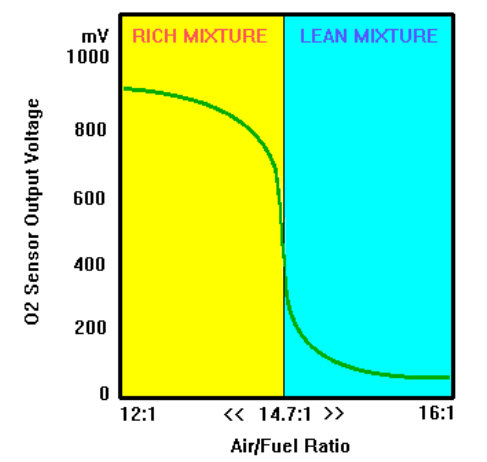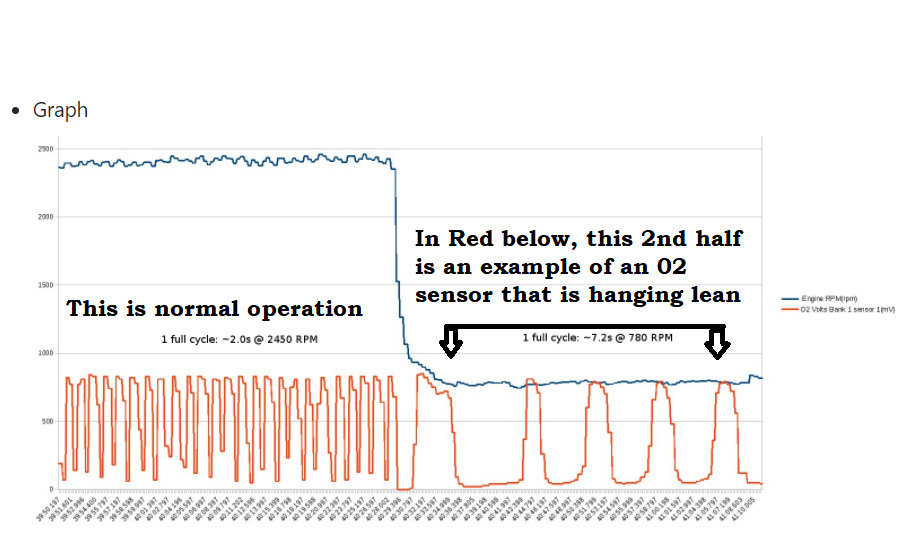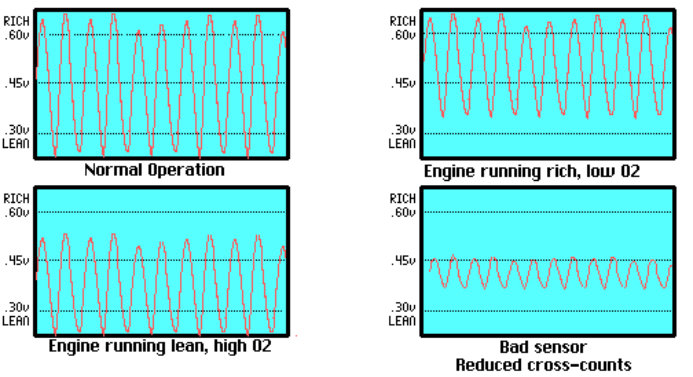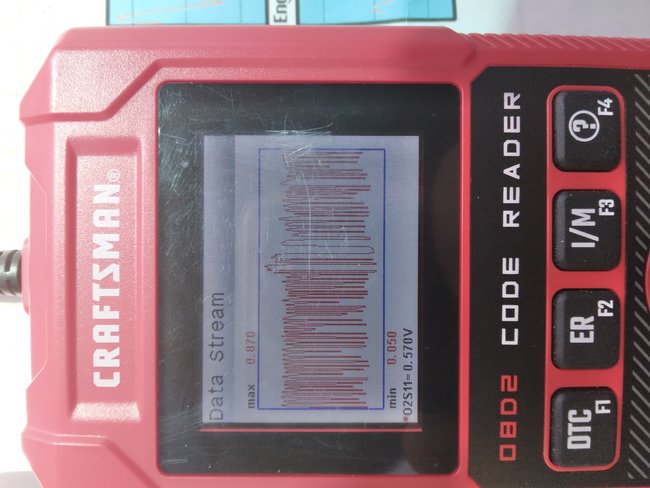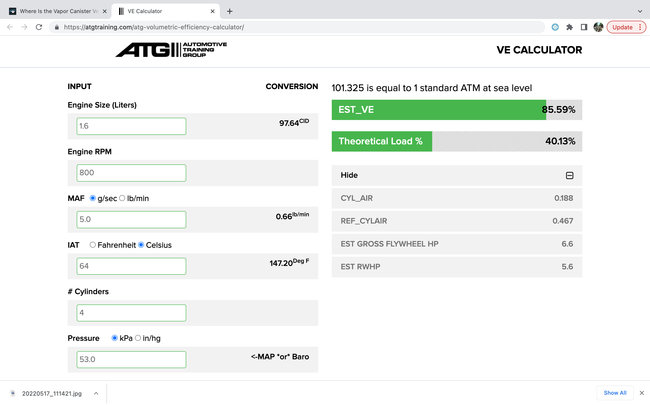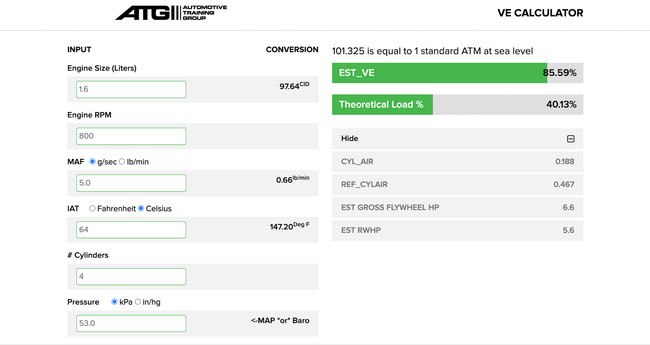Yesterday I looked at the fuel trims and o2 sensor readings when engine was hot and being driven for a long period of time. 02 sensor for front Bank 1 sensor 1 is all over the place. It doesn't give me steady readings. 02 sensor for rear near cat Bank 1 sensor 2 is reading around 600-800v. I remember you said for the rear 02 sensor, if it was reading from 200-800 and it wasn't staying steady there would be a problem with the cat working. But the second 02 sensor looks fine because it's staying around 700v for the most part. 02 sensor bank 1 sensor 1 is going from 0.90v to 800v. It's never staying at one reading. Now from the readings below you'll see what the issue is. When it's lean and when it's rich and when it stays lean and when it stays rich. I also have a pic of a graph of the 02 sensor bank 1 sensor 1 when engine reach temp and was at idle. It starts out normal and has some resistance in the middle.
IDLE READINGS
SHORT TERM FUEL TRIM (AT IDLE) AT ENGINE TEMP
READS BELOW -10 BUT STILL AT LEAN
LONG TERM FUEL TRIM (AT IDLE) AT ENGINE TEMP
READS BELOW -10 BUT STILL AT LEAN
ACCELERATION READINGS
SHORT TERM FUEL TRIM (AT ACEL)
READS BELOW +10 BUT STILL RICH
LONG TERM FUEL TRIM (AT ACEL)
READS BELOW +10 BUT STILL RICH
Now here's where it acts up. This is when the rpm needle starts to surge
Acceleration to deceleration readings
When you let off the gas pedal to decel on brake pedal the rpm needle will continue to rise to 1000 rpms making the engine surge after making a complete stop to oncoming intersection, red light, ect
Short term fuel trim (acel to decel) at engine temp
Reads higher lean counts and higher rich counts. Somewhere between -9 to -20 and adds more fuel +10 to +20. But only does it when you decel and the rpm needle surges. If the rpm doesn't surge the fuel trims are fine. The shor term fuel trims are making the engine lean because air is getting inside the engine and it's putting a heavy load on it when you decel
Long term fuel trim (acel to decel) at engine temp
This was the fuel trim that was reading higher lean and higher rich before at decel before the exhaust was repaired. Short term trims were reading fine before. Now exhaust is repair and short term is reading higher lean and rich counts.
*important info*
Mention before but will mention again because it's important
Before the exhaust was repaired it was the complete opposite. Short term fuel term trims would be normal and long term fuel trims would be higher counts of lean and rich at (acel to decel) at engine temp.
But as you can see now with exhaust repair, short term fuel trim counts only go higher at decel when the rpms surge. I would say every couple of mins the rpms surges when the engine has been driven for a long period of time and short term fuel trim counts get really lean than back to really rich adding all that fuel. When you begin to wide open throttle to accelerate the vehicle the numbers go back to rich again but not too rich and everything smooths out again.
I know I keep repeating myself but it's very important that you know when the fuel trims change and when they do it at what times.
So the real deal here is when you step on acel pedal to acel the short term fuel trims move to lower rich counts until you decel and short term trims move higher lean to higher rich again. I feel if there was large vacuum leak when the engine surges or the cat was clogged it would create back pressure at wide open throttle and you would not be able to floor the gas pedal at wide open throttle or even acel smooth down the road. The gas pedal is able to acel, but when you let off the gas pedal to decel you feel the engine surge and rpms jump. That is when the short term trims go crazy. I wouldn’t say it does it constant at decel, but if the engine is hot and driven long periods that is when the engine and cat gets really hot and rpms will make short fuel trims go higher than normal at decel causing it to go really lean and really rich.
What we are dealing with here is not acceleration issues, it happens at decel when you are slowing down.
0xygen sensor voltage readings: at idle, acel and decel
O2s bank 1 sensor 1- swinging from 0.95v to 840v
02s bank 1 sensor 2 - does not reach below 600v, it can go as high as 850 but stays around 700.
Here is the graph I attach also of the o2 sensor bank 1- sensor 1
You see how the current changes in the middle? That is when the rpm needle surges at idle.
Image (Click to make bigger)
Wednesday, May 18th, 2022 AT 9:23 AM
